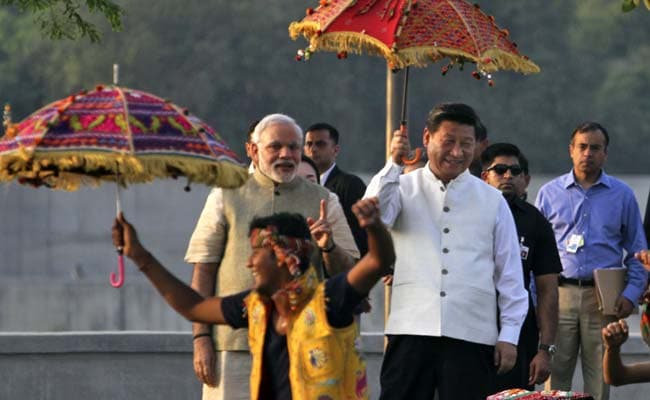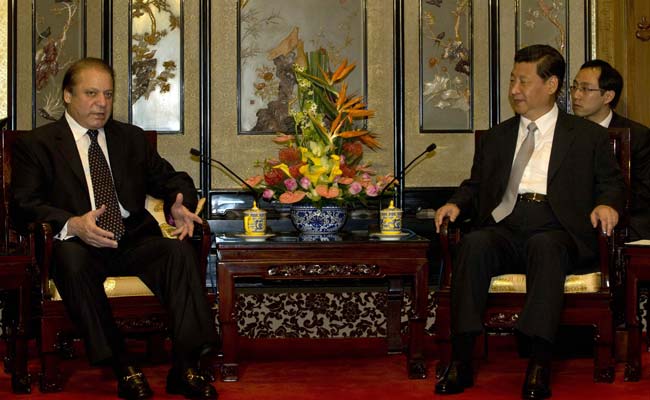While the phrase, "mutual understanding and mutual accommodation", left over from history, really refers to the undemarcated as well as acrimonious border dispute between the two major Asian powers, these days Delhi and Beijing are dealing with other top-of-the-mind matters.
The most important of these is the "increasing strategic value that Pakistan has for China, even beyond being a proxy against India," said a former Indian ambassador to China, who spoke on the condition of anonymity.
Pointing to the overnight cross-border attack by Pakistani fidayeen in Baramulla, in which one Indian soldier has died, the Indian diplomat pointed out that the government would have to start taking into account the limit to which the Chinese would be restrained on the question of India-Pakistan military exchanges.
In the wake of the covert strikes mounted by Indian commandos in Pakistan-Occupied Kashmir - which the Pakistanis have vehemently denied - the Chinese have been especially guarded, advising both sides to exercise both restraint as well as dialogue.
But within a couple of days, the official Chinese news agency Xinhua put out a story saying that Beijing was building its biggest-ever dam on the Xiabuqu tributary on the Brahmaputra river - or the Yarlung Zambo as it is called in Tibet - that would generate 42 MW of electricity and cost $750 million.

China has blocked a Brahmaputra tributary in Tibet for construction of its hydro project
On its own, the story is harmless. After all, the decision to build the dam was taken as long back as 2014, so what's the point of re-running the story again?
Analysts say the Brahmaputra story is a balloon, a signal, an exploratory probe, as to how New Delhi will react to this information. One China-watcher told this reporter that whether or not the Xiabuqu discharge into the Brahmaputra in the Tibetan plateau was significant or not, "by putting out the story, an element of uncertainty has been introduced in the Indian mind."
He pointed to the other signals on the horizon that seemed to have come together, especially Beijing's decision to block a Delhi-led move at the UN to ban Masood Azhar, the Pakistan-based Chief of the Jaish-e-Mohammed terrorist group.
Moreover, China continues to resist allowing India into the world's most powerful nuclear club, the Nuclear Suppliers Group.
Certainly, a lot of water has flowed down the Yarlung Zambo since Modi last met president Xi in India. That was over two years ago, in Ahmedabad, and the fact that the visit was overshadowed by an incursion by Chinese PLA soldiers at Chumar in the Ladakh plateau constituted a moment of truth for the newly-elected Prime Minister. Two years on, the relationship seems to have become even more complex.

PM Narendra Modi and Chinese President Xi Jinping watching a cultural performance in Ahmedabad (September, 2014)
There are several figures bandied about in the Pakistani press on the monies that will be spent for CPEC-related infrastructure from $46 billion to the more recent $51 billion. The Chinese haven't put out one single figure, but several - these amount to around $35 billion, itself a staggering sum.
Question is: as Modi meets Xi, he will certainly try to gauge what plans China has for Pakistan. So far, the China-Pakistan "all-weather relationship" as well as growing economic ties between China and India had put Beijing in a sweet spot. To the equivalent of the Hindi metaphor, "paanchon ungli ghee mein" or enjoying all benefits.
Now it appears that perhaps China is moving Pakistan into a much closer embrace.
How much credence, then, should be given to the story stating the building of the dam on the Xiabuqu? Even if the river only accounts for an exceedingly small discharge, only 0.15 per cent of 25.8 cumecs (cubic metres per second) of the Brahmaputra's 19,000 cumecs discharge when it enters India in the lean period and 40,000 cumecs in the normal period annually.
Certainly as a lower riparian state, India has the right to consume all the water the Brahmaputra brings down (said to be about 40 per cent of its total discharge), while China, as the upper riparian state, is only allowed to build run of the river (ROR) projects. These ROR projects, which temporarily impound water (versus a regular dam which creates pondage) are typically used to generate electricity.
And so the next question follows: was China sending India a message that as the upper riparian state it could also use water as a weapon, just as India was threatening to do with Pakistan by considering the abrogation of the Indus Waters Treaty?

Chinese President Xi Jinping with Pakistan's Prime Minister Nawaz Sharif (File photo)
Meanwhile, there remains the concern about China refusing to ban Masood Azhar, extending the "technical hold" on his proscription for another three months. According to the rules, when this extension expires, China will have to take one of two decisions: to either permanently block the ban, or to drop its objections.
Which one will it be, wonder Indian diplomats.
If the Chinese take the first route, it is certain that relations with Delhi will become even more frosty and may push India further into the arms of the US. Taking the second route would mean that China was abandoning its closest friend and ally, Pakistan, where Masood Azhar lives.
Certainly, by the time the end of December comes around, the Sino-Indian relationship will go through another trial by fire, which is whether or not Beijing will back Delhi's membership at the Nuclear Suppliers Group.
Last time around in July, the Chinese prevented a discussion on India's candidature, insisting that all countries who wanted admission needed to abide by the rules - which is, that only countries who had signed the Nuclear Non-Proliferation Treaty (NPT) could get admission into the NSG. Certainly, India, which is seeking NSG membership as a de facto nuclear weapons state, remains unwilling to do so.
But China surely has another ace up its sleeve even at the NSG: Pakistan. If India wanted admission, then it would have to let Pakistan in at the same time.
But Prime Minister Narendra Modi remains unrepentant. Certainly he was severely embarrassed when he asked President Xi for China's support at the NSG when both leaders met at Tashkent on the eve of the NSG meeting in July in Seoul. Xi just smiled and repeated the formalities necessary for membership.
It is unlikely that Modi will bring up the NSG matter when he meets Xi in Goa. But government sources say that India is determined to go ahead and push its case at the next NSG meeting when it takes place before the end of the year.
It seems that Delhi is looking to get all the remaining 47 countries on board at the NSG, leaving China isolated. "Imagine how it will look, 47-1," said one government source, adding, "that will surely send China a message that the world is ranged against it."
Brinkmanship is the name of the new game in Delhi. At least for the time being, Modi and his advisors believe they have to start paying hostile neighbours back in the same coin they have received for so many years.
(Jyoti Malhotra has been a journalist for several years and retains an especial passion for dialogue and debate across South Asia.)
Disclaimer: The opinions expressed within this article are the personal opinions of the author. The facts and opinions appearing in the article do not reflect the views of NDTV and NDTV does not assume any responsibility or liability for the same.


